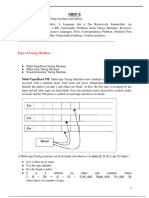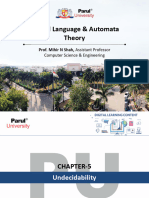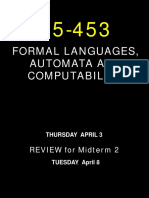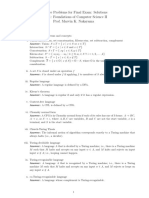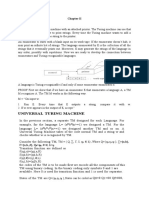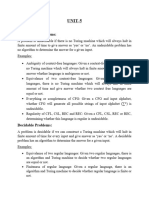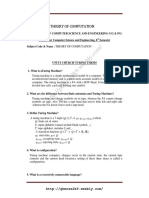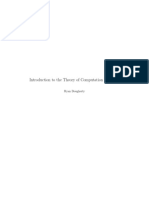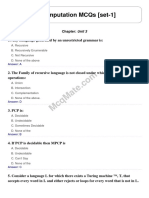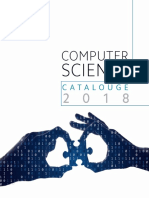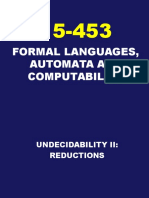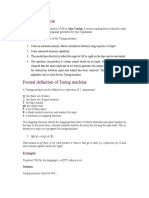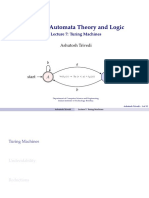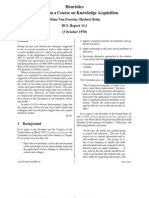0% found this document useful (0 votes)
55 views15 pagesTuring Machine Notes Unit 5
The document provides a comprehensive overview of Turing Machines, their variants, and the concept of undecidability in computability theory. It explains the structure of Turing Machines, the Church-Turing Thesis, and the classifications of languages such as recursive and recursively enumerable languages. Additionally, it discusses undecidable problems, including the Halting Problem and the Post Correspondence Problem, and introduces recursive function theory, highlighting the differences between primitive recursive and μ-recursive functions.
Uploaded by
Kartikay PantCopyright
© © All Rights Reserved
We take content rights seriously. If you suspect this is your content, claim it here.
Available Formats
Download as DOCX, PDF, TXT or read online on Scribd
0% found this document useful (0 votes)
55 views15 pagesTuring Machine Notes Unit 5
The document provides a comprehensive overview of Turing Machines, their variants, and the concept of undecidability in computability theory. It explains the structure of Turing Machines, the Church-Turing Thesis, and the classifications of languages such as recursive and recursively enumerable languages. Additionally, it discusses undecidable problems, including the Halting Problem and the Post Correspondence Problem, and introduces recursive function theory, highlighting the differences between primitive recursive and μ-recursive functions.
Uploaded by
Kartikay PantCopyright
© © All Rights Reserved
We take content rights seriously. If you suspect this is your content, claim it here.
Available Formats
Download as DOCX, PDF, TXT or read online on Scribd
/ 15



